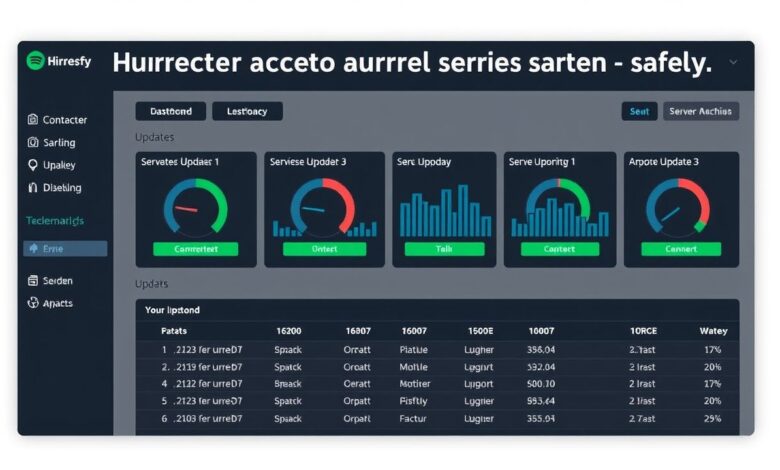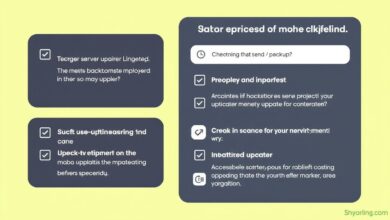Automating Server Updates Safely: Balancing Efficiency and Risk

In today’s fast-paced digital landscape, keeping servers updated is not just good practice; it’s a fundamental security requirement. Neglecting updates leaves systems vulnerable to exploits, potentially leading to data breaches, downtime, and significant financial loss. The sheer volume of servers and the frequency of patches make manual updates a daunting, time-consuming task. This naturally leads IT professionals towards automation. But is Automating Server Updates Safely truly achievable, or does the convenience come at too high a price? This post delves into the pros and cons, helping you navigate this critical aspect of server management.
The need for timely updates cannot be overstated. Zero-day vulnerabilities and newly discovered exploits are constantly emerging. Applying security patches as quickly as possible minimizes the window of opportunity for attackers. Automation seems like the perfect solution – tireless, consistent, and fast. However, the reality is more complex.
[Hint: Insert image/video comparing manual vs. automated update timelines here]The Allure of Automation: Why We Automate Server Updates
The benefits of automating server updates are compelling, making it a popular strategy for many organizations.
- Enhanced Security Posture: Automation ensures that critical security patches are applied promptly across the server fleet, often much faster than manual processes allow. This significantly reduces the exposure to known vulnerabilities. Regular, automated patching is a cornerstone of modern security best practices.
- Increased Efficiency: Manually updating servers, even a small number, is repetitive and consumes valuable IT staff time. Automation frees up administrators to focus on more strategic initiatives, innovation, and complex problem-solving rather than routine maintenance. Tools like Microsoft’s Windows Server Update Services (WSUS) or more comprehensive endpoint management solutions are designed specifically for this efficiency gain.
- Consistency and Reliability: Automated processes follow predefined rules and schedules, ensuring updates are applied consistently across all targeted servers. This reduces the risk of human error, such as forgetting a server or applying the wrong update manually.
- Scalability: As infrastructure grows, manually managing updates becomes exponentially more difficult. Automation scales easily, handling hundreds or thousands of servers with the same configured process.
The Hidden Dangers: Cons of Automated Server Updates
Despite the advantages, blindly enabling automatic updates can lead to significant problems. The potential downsides require careful consideration.
- System Instability and Downtime: This is perhaps the most common fear. An incompatible update, a buggy patch, or a conflict with existing software (especially custom or legacy applications) can cause critical services to fail. Firmware updates, if automated without caution, can even brick hardware. Troubleshooting these issues can negate any time saved by automation.
- Application Compatibility Issues: Updates to operating systems, libraries, or dependencies can break critical business applications that rely on specific versions. Automated updates might roll out these changes before adequate compatibility testing is performed.
- Update Mechanism Vulnerabilities: Ironically, the update process itself can become an attack vector. Malicious actors could potentially compromise the update source or distribution mechanism to push malware disguised as legitimate patches. While rare for major vendors, risks exist, particularly with third-party software or less secure update channels. Concerns have been raised about the potential for compelled access to update streams, as discussed in various security forums and analyses.
- Tool Failures and Complexity: The automation tools themselves (like WSUS or others) can fail. Synchronization problems, definition update issues, or configuration errors can halt the patching process, sometimes requiring significant manual effort to diagnose and resolve, defeating the purpose of automation.
- Loss of Granular Control (If Poorly Implemented): While some tools offer control, basic “set-and-forget” automation removes the opportunity for administrators to vet updates, understand their impact, or schedule them strategically around business-critical periods.
Finding the Balance: Strategies for Automating Server Updates Safely
The goal isn’t to abandon automation but to implement it intelligently. Automating Server Updates Safely requires a strategic approach:
1. Phased Rollouts and Testing Rings
Never deploy updates to all servers simultaneously. Implement a phased approach:
- Test/Dev Environment: Apply updates here first. These non-critical systems allow you to catch immediate compatibility issues or major bugs.
- Staging/Pilot Group: Roll out updates to a small group of representative production servers or less critical systems. Monitor closely for subtle issues.
- Production Rollout: Once validated in earlier phases, deploy to the broader production environment, potentially in waves.
2. Robust Pre-Deployment Testing
Integrate automated testing where possible after updates are applied in the Test/Dev and Staging environments. Verify core application functionality, system stability, and performance metrics.
3. Configuration Management and Rollback Plans
Use configuration management tools to ensure server states are consistent. Crucially, always have a tested rollback plan. This could involve system snapshots, backups, or specific uninstall procedures for problematic patches.
4. Monitoring and Alerting
Implement comprehensive monitoring of server health, application performance, and system logs. Set up alerts to notify administrators immediately if issues arise post-update.
5. Choosing the Right Tools and Configuration
Select patch management tools that offer granular control over *which* updates are approved, *when* they are deployed, and *to which* groups of servers. Configure these tools carefully according to your phased rollout strategy. Explore options beyond basic OS tools if necessary. For more tips on server management, see our guide on essential server maintenance tasks.
Conclusion: Automation as a Tool, Not a Mandate
Automating Server Updates Safely is a balancing act. The efficiency and security benefits of automation are undeniable, especially in the face of relentless cyber threats. However, the risks of instability and unintended consequences are real and potentially severe.
Blindly enabling automatic updates without safeguards is courting disaster. A mature approach involves leveraging automation strategically, incorporating rigorous testing, phased rollouts, and robust monitoring. By treating automation as a powerful tool within a broader patch management strategy, organizations can harness its benefits while mitigating the inherent risks, leading to a more secure and stable server environment.




